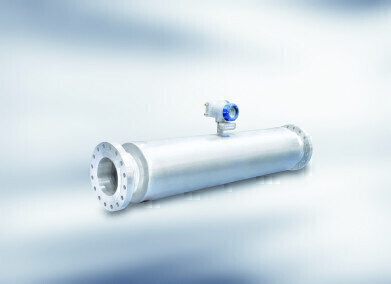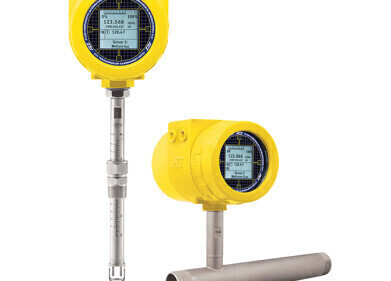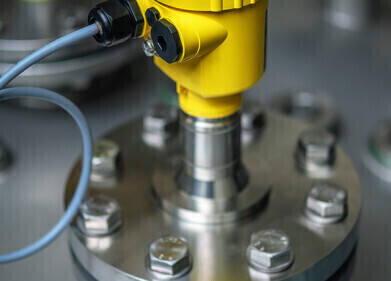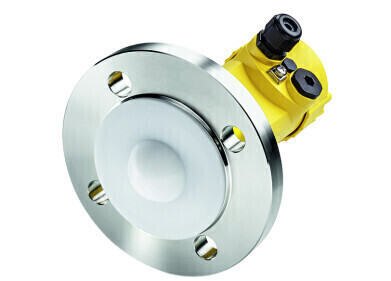Flow Level Pressure
Coriolis Mass Flowmeter for Bulk Measurement in the Oil and Gas Industry
Jul 10 2009
When it comes to applications where calibration and charging are required, the oil and gas industry is reliant on accurate mass flow meter readings — even at low flow velocities. Because Coriolis technology is also being used for gas measurements, the demand for Coriolis devices with larger nominal widths to record very large flow volumes is growing rapidly. The drivers behind manufacturing in sizes from 6 to 10 inches (DN 150 to DN 250) are the requirements and the ever-increasing spread of this technology in the crude petroleum and gas industry, particularly for bulk transportation of crude petroleum products. Crude petroleum and gas refineries constitute the second-biggest area of use for Coriolis flow meters, after the chemical and petrochemical industry. Krohne (Germany) is now following these new products with the Optimass 2000, in three nominal widths: S100 (DN 100/150), S150 (DN 150/200) and S250 (DN 250/300).
In the development phase for the Optimass 2000, comprehensive research work was carried out in order to ensure that the specifications conformed to the requirements of potential industrial users. The research found that size and weight are key factors for customers, especially for manufacturers and suppliers of metering equipment for the crude petroleum and gas industry. The ideal metering device should be a component part of crude petroleum and gas pipelines. Krohne took on this challenge and developed a large nominal width Coriolis flow meter, drawing on its wealth of experience and its leading role in straight pipe engineering.The Optimass 2000 stands out on account of its twin straight tube design, where the length of the pipes has been optimized to ensure a stable Coriolis signal and thus highly accurate metering and zero point stability, even at low flow volumes. This is especially important when metering hydrocarbons, where the flow velocity is not permitted to exceed a given value due to the risk of static charges. For measurements where calibration is required, too, a good metering range is required for many applications.
The requirements from NACE were similarly taken into account. NACE only permits certain materials and welding procedures for these applications, since when metering crude petroleum containing sulphur there is a risk of cracks occurring in the metal due to the action of sulfide. To that end, all metering pipes, flow distributors and flanges are manufactured in duplex stainless steel. A further requirement of the crude petroleum and gas industry is the capacity to withstand pressures of up to 150 bar.OPTIMASS 2000 satisfies this requirement, pursuant to 97/23/EC (the Pressure Equipment Directive). This means that a maximum level of safety is ensured at high operating pressures. In addition, the flow meter can also be equipped with high-pressure flanges to PN 160 or ASME 1500lb and in sizes to DN 300 or 12 inches. The outer cylinder manufactured entirely in stainless steel with a rupture pressure of over 100 bar ensures that the product remains enclosed in a pressure-resistant casing and cannot leak out directly. If the operating pressure exceeds the rupture pressure, a rupture disk in the pressuretight casing is used to ensure high levels of safety. To keep the loss of pressure as low as possible and to prevent cavitations where there are high flow volumes, there has been significant investment in optimizing the flow distributor. Testimony to the fact that this objective has been achieved comes, for example, from the size 250 flow meter, which allows for flow volumes of up to 2300 metric tons/hour.
One of the challenges in developing Coriolis meters is the selection and specification of suitable metering pipes. The rigidity of the metering tube alters on large nominal width straight tube devices working at high operating pressures. Krohne developed a new, patented process for correcting the effects of pressure on the density measurement. This was achieved by applying an expansion metering strip crosswise (radially) on the metering pipe; this records the changes in pipe rigidity caused by the pressure. This value is then used to correct the density measurement. Since mass devices calculate the volume flow using mass and density, this approach also ensures stable volume metering under variable process conditions.Digital Edition
PIN 25.1 Feb/March
March 2024
In This Edition Safety - The technology behind the ION Science Tiger XT - Safety with ammonia and LOHCs as hydrogen carriers Analytical Instrumentation - Discussion on new tribology te...
View all digital editions
Events
Apr 22 2024 Hannover, Germany
Apr 22 2024 Marrakech, Morroco
Apr 22 2024 Muscat, Oman
Apr 22 2024 Rotterdam, Netherlands
Apr 23 2024 Singapore


















